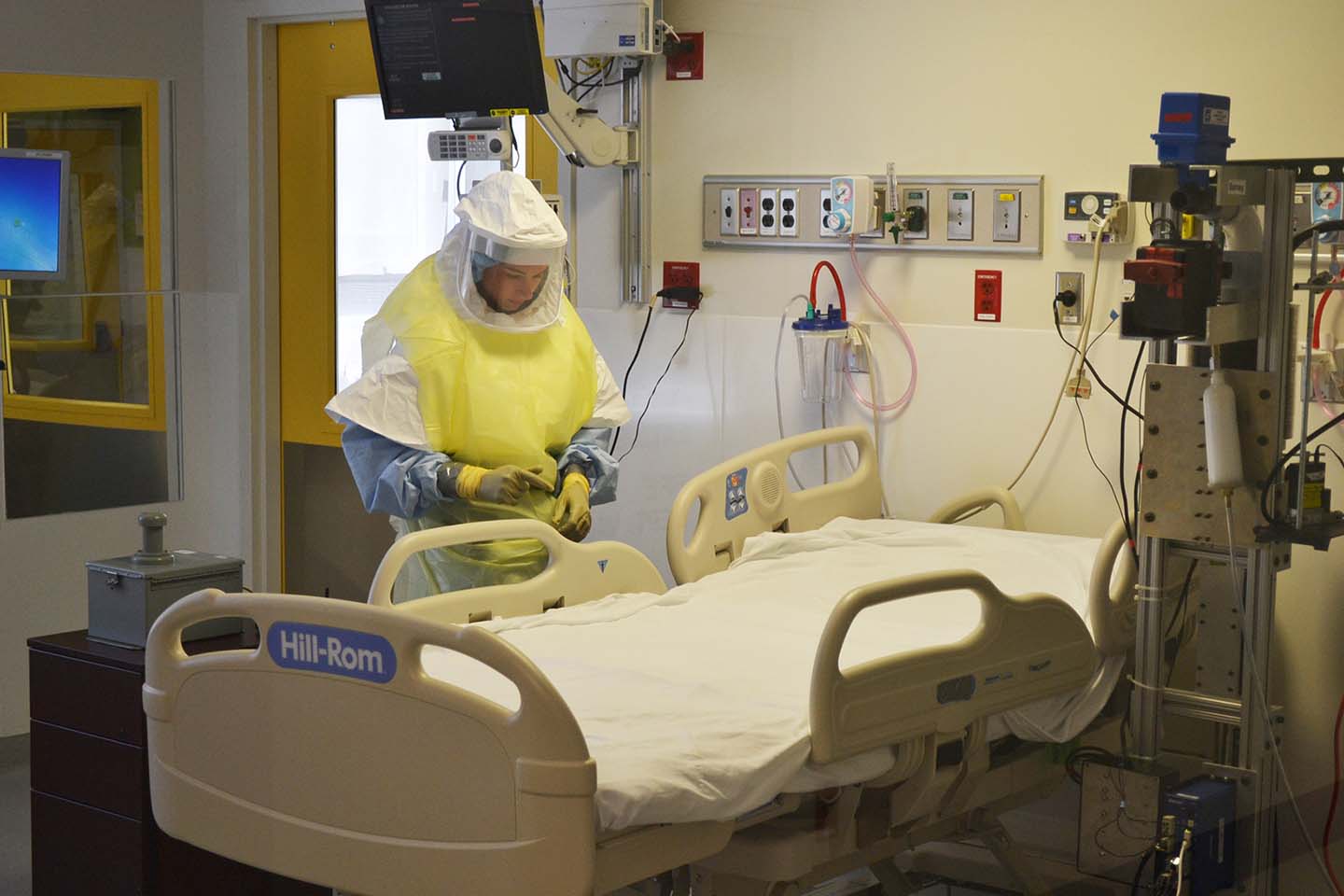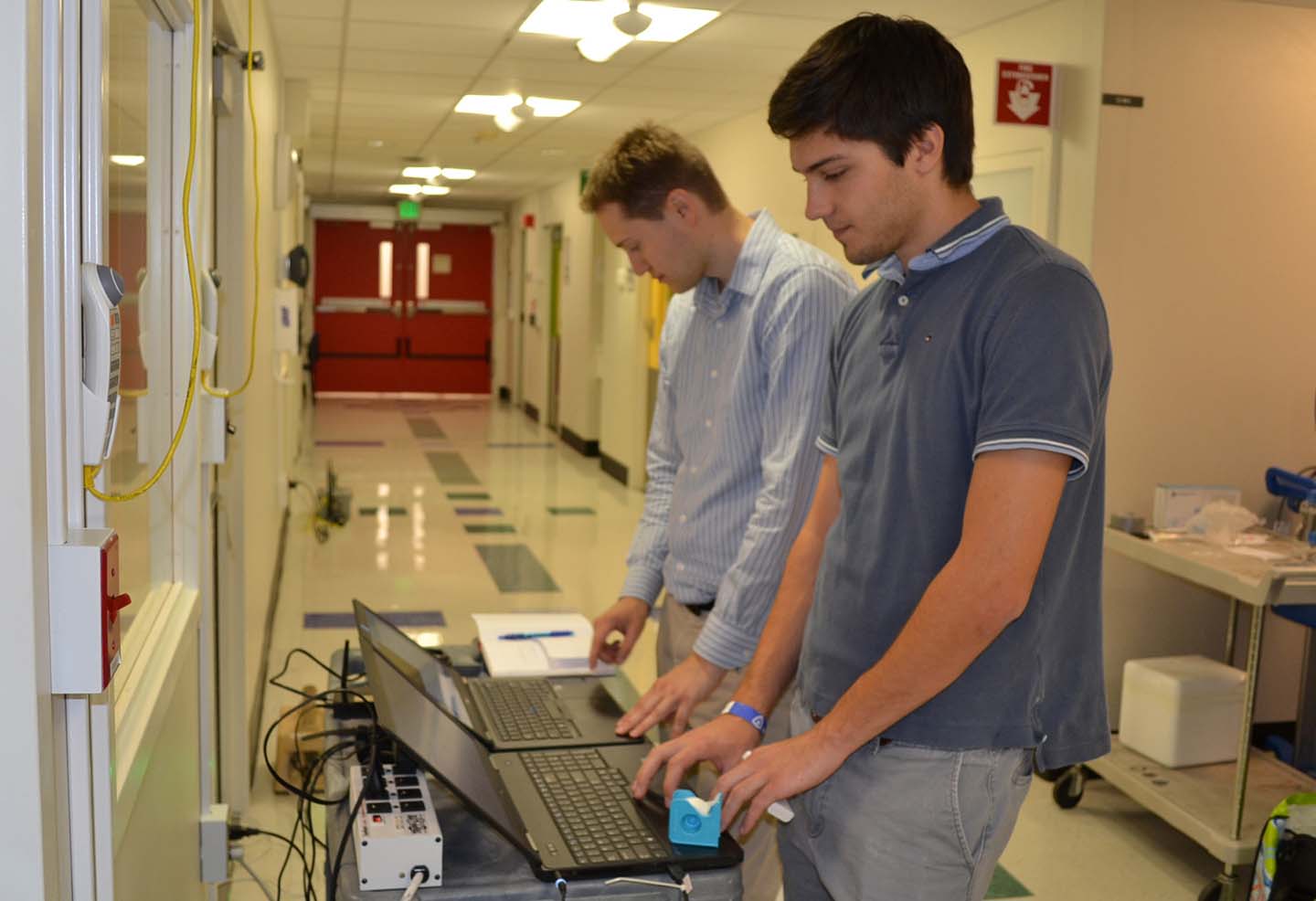
While researchers monitor simulated, aerosolized pathogens moving through the biocontainment unit at Johns Hopkins Hospital, nurse Mallory Reimers goes through the steps of caring for an infected patient in the unit itself. The aerosols were spread by a cough simulator to the right of the bed.
Credit: APL
Press Release
APL Researchers Gain Insight into Protecting Patients, Caregivers from Infectious Disease
Researchers from the Johns Hopkins University Applied Physics Laboratory (APL) have mapped the movements of a simulated pathogen through a medical biocontainment facility, taking a critical first step in developing protocols to prevent the spread of infectious disease and protect hospital patients and caregivers.
An APL team, collaborating with colleagues in Johns Hopkins University’s School of Public Health and School of Medicine and the Johns Hopkins Hospital, and with assistance from the Centers for Disease Control and Prevention/National Institute for Occupational Safety and Health, conducted separate tests in which researchers tracked the flight of fluorescent aerosolized beads — harmless, but sharing many properties of an infectious pathogen — as if a bedridden patient had coughed and dispersed the germs into the room.
The work builds on APL’s expertise in aerosol science and was the culmination of a Healthcare Acquired Infection research effort within APL’s new National Health Mission Area. The team conducted its initial simulations in APL’s biological aerosol facilities before moving on to a state-of-the-art biocontainment unit at Johns Hopkins Hospital.
That unit — developed after the 2014 Ebola outbreak — was designed to care for patients with highly infectious diseases while ensuring the safety of both the patients and health workers. “However, no protocols existed for preventing infectious disease dissemination in a biocontainment unit,” said David Drewry III, the APL biomedical engineer who led the study. “By learning more about the fate of pathogens in a hospital environment, we can start to develop standards for training health care workers in infection prevention, and designing facilities that ensure the safety of patients and caregivers.”
The team used a biomimetic coughing device to simulate contamination from an infected patient. The device released fluorescent polystyrene beads to mimic an aerosolized pathogen, and the team monitored the releases in four progressive scenarios: a patient alone in the room; a nurse crossing through the room between protective-gear donning and doffing areas; the same protected nurse spending five minutes interacting with the patient; and the patient coughing just as the nurse was leaving the room to remove the protective gear.
